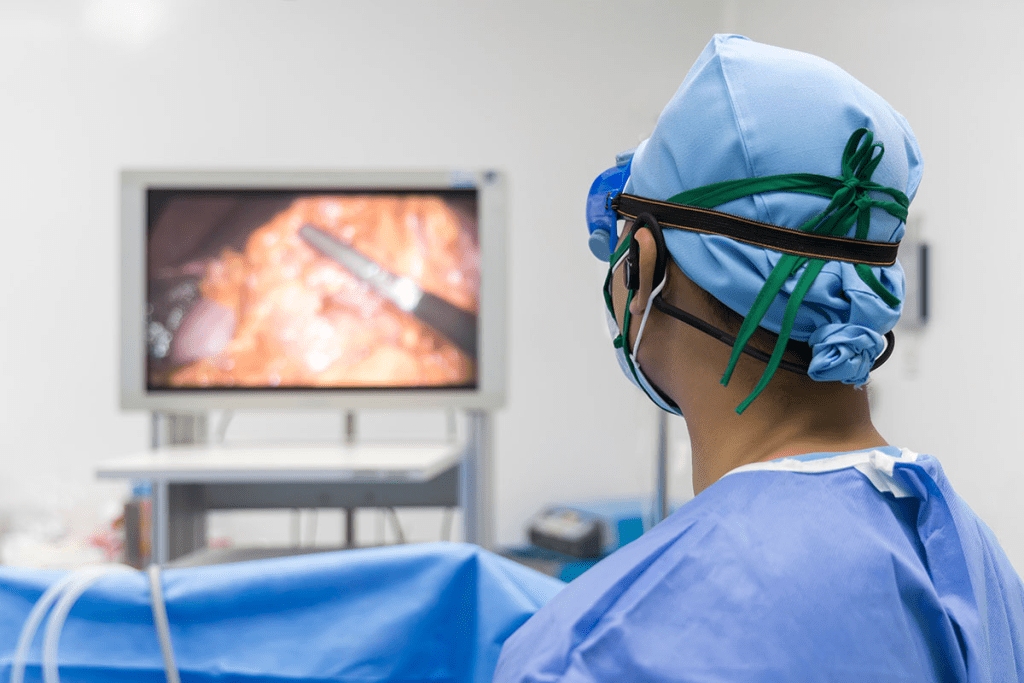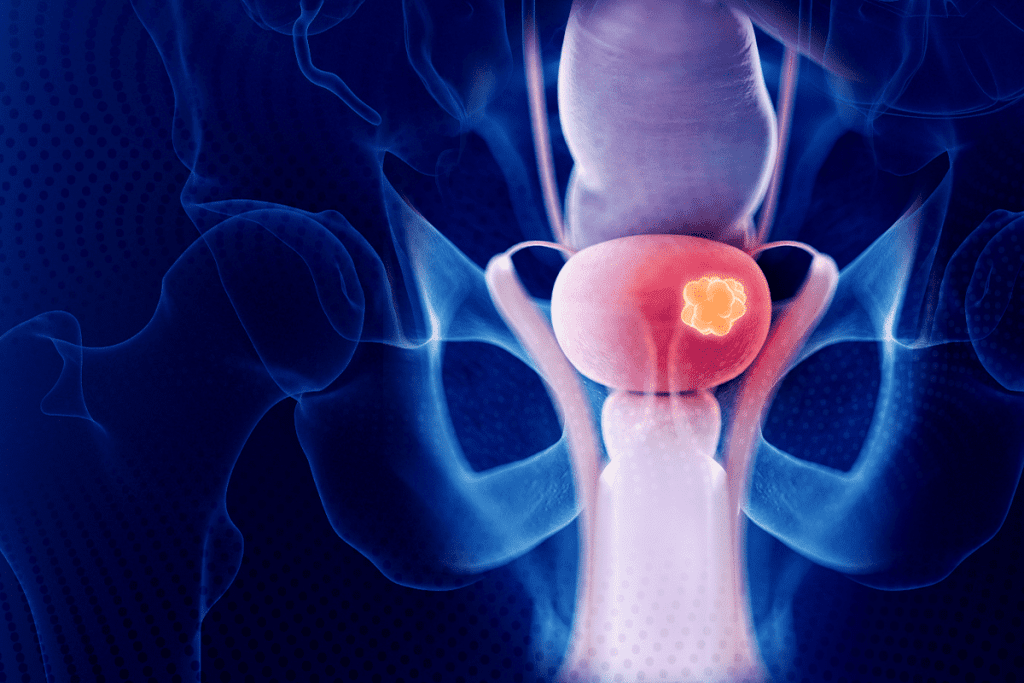Last Updated on November 24, 2025 by
Deion Sanders, a 57-year-old two-time Super Bowl champion and University of Colorado coach, had a big surgery. He was treated for an aggressive bladder cancer. Doctors found a tumor this spring, and Sanders had surgery that saved his life. The surgery was a complex bladder reconstruction surgery, where they made a new bladder from his intestine. This shows how far medical technology and surgery have come, much like how a simple update such as “fedex label created signals the start of a critical delivery process.

We will look into the details of this surgery and its effects on Sanders’ health. We’ll also talk about bladder cancer treatment. Knowing how much the human bladder can hold helps us understand the surgery’s challenges.
Deion Sanders got a bladder cancer diagnosis after feeling some symptoms. He stressed the need for regular check-ups. “Please get yourself checked out,” he said.
Deion Sanders went to the doctor because of some symptoms. Doctors ran tests to find out what was wrong. Early detection is key for treatment.
Here are the main reasons for Sanders’ diagnosis:
Sanders was diagnosed with aggressive bladder cancer. This news was a shock to many. It shows how important timely medical intervention is.
Conditions like calcium build up on the brain can be a worry for surgery patients. But Sanders’ team was ready for any issues.
There are new ways to help bladder cancer patients, like artificial urine. This is for those who have big changes in their urinary system.

Sanders’ story is a strong reminder to get regular health checks. We hope his story motivates others to look after their health and seek help when needed.
Neobladder reconstruction surgery is key for bladder cancer patients. It removes the bad bladder and makes a new one from the intestine. This is a complex process.
A neobladder surgery, or orthotopic neobladder, tries to make urination normal again. It uses about 45 cm of the small intestine to make an artificial bladder.
The steps are:

The cystectomy, or bladder removal, is vital for neobladder surgery. It gets rid of the cancerous bladder. The team must remove the bladder carefully to prepare for the next steps.
“The goal of cystectomy is not only to remove the cancerous bladder but also to lay the groundwork for reconstructing urinary function,” says a leading urologist.
Deion Sanders chose neobladder surgery for his cancer treatment. The decision was based on his cancer stage, health, and personal wishes. This surgery might help him urinate more naturally.
His medical team hoped to improve his life after surgery. They wanted him to have easier urination and maybe avoid using external devices.
The University of Colorado did a special surgery on Deion Sanders. They used advanced robotic techniques for a neobladder reconstruction. Dr. Janet Kukreja, the director of urologic oncology, led the team. She has a lot of experience with robotic surgeries.
The team used a robotic system for better precision and less recovery time. Robotic-assisted surgery gives more control and a clearer view. This is key for complex surgeries like neobladder reconstruction.
A big part of the surgery was making a new bladder from 45cm of the middle portion of the small intestine. They chose this part carefully and shaped it into a bladder. This way, Sanders could keep his natural way of urinating as much as possible.
The surgery was done by a very skilled team, with Dr. Janet Kukreja at the helm. The University of Colorado Cancer Center is known for its top-notch urologic oncology department. It has the latest technology and experts in their field. The center’s advanced setup helped make sure Sanders got the best care.
Behind the scenes of Deion Sanders’ successful surgery was a detailed logistical operation. It involved more than just the medical team. It needed precise coordination and planning.
From the moment a FedEx label was created for the equipment, every step was carefully managed. This ensured a smooth operation.
The medical logistics team was key in preparing and moving the needed equipment for Deion Sanders’ surgery. This included stand to pee devices and other special tools. They made sure all equipment was sterilized and got to the University of Colorado on time.
The human body is a conductor of electricity, making certain equipment vital during surgery. The team worked with the medical staff to take all necessary precautions. They also made sure the equipment worked well with the robotic surgical techniques.
Coordinating the medical team and resources was another big part of the operation. The team included surgeons, nurses, and support staff briefed on Deion Sanders’ case. The logistics team made sure all needed resources, like operating rooms and recovery areas, were ready.
The success of Deion Sanders’ surgery showed the hard work and dedication of the medical logistics team. Their efforts, from creating the FedEx label to the final preparations, were key to a successful surgery.
After his neobladder reconstruction surgery, Deion Sanders went through a tough but well-managed recovery. He had to regain his strength and get used to the surgery’s changes. This involved post-surgery care, a recovery timeline, and learning to use the neobladder.
Right after surgery, Deion Sanders was watched closely in the hospital for any issues. Post-surgical care is key in the early recovery stages. It makes sure the patient is safe and the new bladder works right. The team at the University of Colorado helped manage his pain, watched for infections, and guided him through the start of recovery.
The recovery timeline is different for everyone, but most patients spend a few days in the hospital. It can take weeks to months to fully recover and get back to normal. It’s important to follow the doctor’s advice closely to avoid problems and have a smooth recovery.
Getting the bladder to work with the neobladder is a big part of recovery. Dr. Jodi Maranchie says it takes practice. Patients must learn to control the new bladder, manage when to urinate, and handle any issues like incontinence. This requires patience, effort, and help from doctors.
Deion Sanders and his team worked together to overcome any hurdles during his recovery. His success shows how well the surgery and care from the University of Colorado worked.
It’s important to know the stats and risk factors of bladder cancer for early detection and prevention. Bladder cancer is a big health problem worldwide. Knowing its prevalence and risk factors can help reduce its impact.
The American Cancer Society predicts about 85,000 new cases of bladder cancer in the U.S. in 2025. This shows why we need more research and better treatments.
As the American Cancer Society notes, “Bladder cancer is the fourth most common cancer in men and the twelfth most common in women.”
“The number of new bladder cancer cases has been steadily increasing over the years, making it a growing public health concern.”
Men are much more likely to get bladder cancer than women. Data shows men will account for about 65,000 of the new cases. This highlights a big gender gap in bladder cancer risk.
Smoking is a major risk factor for bladder cancer. It’s linked to about half of all bladder cancer cases. Tobacco smoke’s chemicals get into the urine, damaging the bladder and raising cancer risk.
Quitting smoking is a key way to lower bladder cancer risk. Health experts stress the importance of smoking cessation programs and awareness campaigns in fighting bladder cancer.
Deion Sanders bravely shared his battle with bladder cancer and surgery. His story has made us all more aware of bladder cancer. It has also helped reduce the shame around bladder cancer and issues with neobladder reconstruction.
His surgery was a big deal, showing how complex it is. The University of Colorado’s care helped him a lot. His success shows how important it is to talk about bladder cancer.
We must support those fighting bladder cancer. By talking more about it, we can help improve care and outcomes. Deion Sanders’ story shows how sharing can make a big difference in awareness and change.
Neobladder reconstruction surgery creates a new bladder from the small intestine. This is done after removing the original bladder due to cancer or other conditions.
A human bladder can hold about 400-600 milliliters of urine. But, this amount can vary from person to person.
The air bladder, or swim bladder, helps fish stay buoyant. In humans, we have a urinary bladder for storing urine, not an “air bladder.”
Bladder reconstruction surgery rebuilds or replaces the bladder. It uses a part of the intestine to restore urinary function in patients with bladder damage or disease.
Artificial urine is made in labs for testing, like calibrating medical equipment. It’s made to mimic real urine’s properties.
The middle part of the small intestine, about 45cm long, is used for a neobladder. It’s chosen for its length and blood supply.
Yes, stand-to-pee devices work well for women, mainly when using a toilet is hard. They let women pee while standing.
Yes, the human body conducts electricity because of its water and electrolytes. This is important in medical situations.
Bladder cancer risks include smoking, chemical exposure, and genetics. Men are more likely to get it than women.
Deion Sanders had neobladder surgery for bladder cancer. His case shows the advanced treatments available for this condition.
Pers, Y. M., Lang, H., Becker, F., & Roupret, M. (2024). Advances in urinary diversion: From cutaneous ureterostomy to orthotopic neobladder reconstruction”A comprehensive review. Journal of Personalized Medicine, 14(4), Article 392.
Subscribe to our e-newsletter to stay informed about the latest innovations in the world of health and exclusive offers!